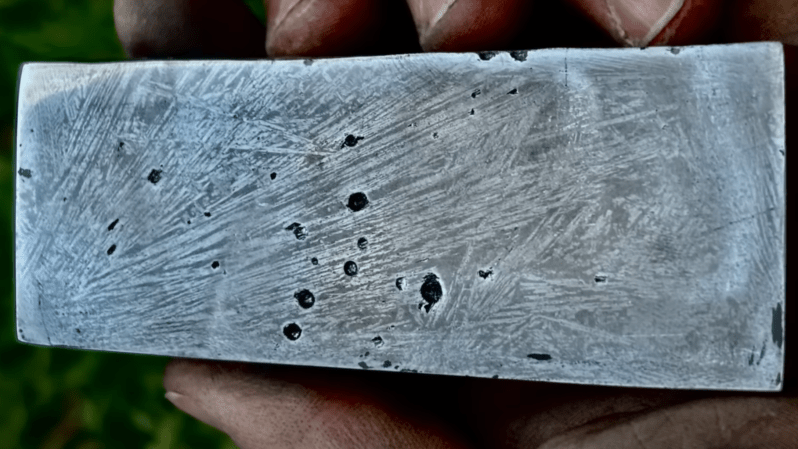From the outside, iron meteorites tend to look like formless, rusted lumps of metal, which is why museums often polish and etch sections to show their interior structure. This reveals their Widmanstätten patterns, a latticework structure of parallel iron-nickel intermetallic crystals which forms over millions of years of very slow solidification. Inspired by this, [Electron Impressions] created his own metal composition which forms similar patterns on a much-faster-than-geological time scale.
Witmanstätten patterns form when a meteorite colliding with a planet launches molten iron and nickel into space, where they very slowly solidify. As the mixture cools, it first forms a stable phase called Taenite, then begins to precipitate another phase called Kamacite. Kamacite forms needle-shaped crystals, which when polished show up against the Taenite background. However, such needle-shaped growth only becomes noticeable at a cooling rate of a few degrees per million years, so it’s not really a practical way to make the pattern.
Instead of iron-nickel, therefore, [Electron Impressions] used a copper-aluminium alloy. The copper-aluminium system contains an intermetallic compound which forms large rod-shaped crystals, as well as a eutectic copper-aluminium alloy which can form a background for the crystals. For his first attempt, [Electrons Impressions] melted a composition of 45% copper and 55% aluminium, which produced large crystals on slow cooling. This had a visibly different structure than Widmanstätten patterns, so to reduce the numbers of crystals, he tried again with 40% copper. This produced a criss-cross crystal pattern, not quite a Widmanstätten pattern, but very similar, and good enough for decorative purposes.
When a meteorite collides with a planet and ejects material, the impact can be dramatic enough for amateur astronomers to capture. If you’re looking for something closer to home, it’s also possible to grow non-intermetallic copper crystals.
Thanks to [Zane Atkins] for the tip!















That’s very interesting!
“55% aluminium”
As a fun aside I note that on my keyboard you can type “55%” by hitting “555” with a shift on the third character.
So you can literally do this with a 555! 😃
Although, you could possibly use iron-nickel…. You just might end up with the more useful but slightly less pretty structure of tetrataenite.
See DOI:10.1002/advs.202204315 and Patent No.: US 11,462,358 B2
Selective (electro-)etching of SAC solder can expose some very intricate Ag3Sn platelets / needles. Certainly solder is expensive, but maybe that’s the best use of those early, crappy lead-free solder alloys.
An image can be found in https://www.researchgate.net/publication/234844373_Physics_and_materials_challenges_for_lead-free_solders –
FIG. 24. SEM image of a large Ag3Sn plate-type precipitate in the eutectic
SnAg solder (after Ref. 8).”